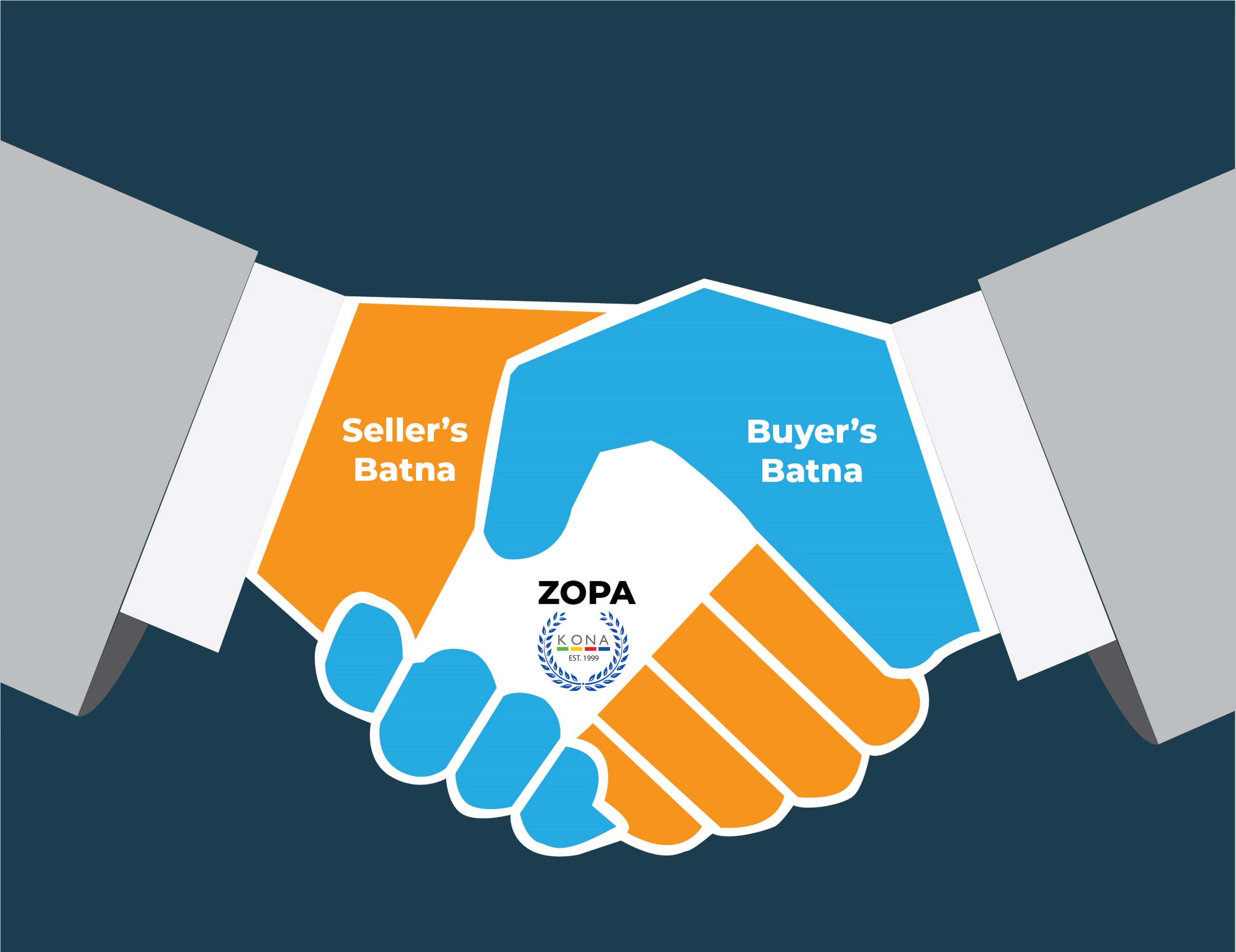
Sometimes a sales negotiator will deliberately deadlock to lower your aspirations. They will take you to the end of your tether to see how far you are willing to go before reaching your breaking point in a negotiation deadlock situation.
Negotiation Deadlock
Good negotiators know the power of silence in a negotiation deadlock. Additionally, they also know that many salespeople are petrified of a negotiation deadlock. So much so that, at the first sign of fear, they will make concessions rather than face the possibility of not closing the business.
The seasoned negotiator will use this fear to their advantage. That is, by threatening deadlock. ‘Well, if that’s the best you can do, it’s outside what I’m allowed to spend, so we’ll have to pass on it this time.’
The shaky salesperson will automatically reply with a lowered price. And the rationalisation behind their shaken move would be something along the lines of “Well, it’s the only way I could win the deal and get the business.”

However, the skilled negotiator knows exactly how to handle a price challenge. That means they would not fall for the fear tactic. Rather they would reply by suggesting an alternative offer.
As this is a situation almost every salesperson has been in, here are 5 Ways to Handle a Negotiation Deadlock to help you move forward in every negotiation you are in.
Avoid Final Offers
In negotiations, it’s often tempting to show strength by saying early on, “this is my final offer”. This phrase is overused. And is said to emphasise that you won’t take any nonsense.
Moreover, to show that you are fed up with the way things are going. It is also used to show that your position is so strong, that you can afford to let the opportunity to settle go.
But that is in fact far from what you’re doing. Final offers in a negotiation restrict your ability to negotiate. Additionally, it will annoy your counterpart.
Conversely, you’ll look a bit foolish if you make a final offer and then moments later concede to get a deal. Consequently, allowing your credibility to escape out of the window.
Focus on the Can-Do
When in a negotiation, do not tell your counterpart what you cannot do. Rather talk to them about what you can do for them.
When you focus on the “can do”, psychologically your negotiation counterpart is more likely to move along.
Plus, it also encourages reciprocity.
Build on their ideas

View yourself as a mediator. A problem solver that includes the other party’s ideals in the process. Try to suggest ideas that satisfy their underlying interests. That is, meet their pain points.
Do so by giving them a stake in the outcome. That is, make sure your counterpart has an active role in the process.
Reaching an Agreement
If you want the other party in a negotiation to accept a conclusion, it is important that you involve them in the process of achieving that conclusion.
You will find, that reaching an agreement becomes much easier when both parties feel ownership of the ideas.
Negotiators should view themselves as working together, attacking the problem in unison, not each other.
Believe in BATNA
Point out their Best Alternative to a Negotiated Agreement (BATNA). Identifying your negotiator’s BATNA is a necessary skill for avoiding a negotiation deadlock.
Know Your BATNA
In other words, a negotiator’s BATNA is what their alternative is if the negotiation is unsuccessful. It is crucial that you enter into every serious negotiation knowing your BATNA.
ZOPA – Zone of Potential Agreement
Then you can begin to work on your ZOPA. ZOPA stands for “Zone Of Potential Agreement.” It is the overlap between the seller’s and buyer’s settlement range. With a BATNA and ZOPA in place, negotiation deadlocks are highly unlikely to happen.
Regroup & Refocus
Asking for a recess is both encouraged and accepted in a negotiation.
It allows for you to have thinking time.
But it also provides the other party with an opportunity to consider their position as well.
Additionally, in the heat of a negotiation situation, also helps calm down emotions.

Book your Sales Team on their Negotiation Training Workshop.
Gather the team and we will take care of the rest.
Call us at KONA on 1300 611 288 for a conversation, or email info@kona.com.au anytime.









 What does ideal sale look like for you and your company?
Make a list of the solutions that your product or service addresses and use them as a checklist when you’re qualifying with procurement
Your job then becomes one of asking questions to see which ones are important to procurement and why
When the time comes to have the closing discussion your focus narrows only to those issues that are important to your procurement professional. Your process therefore becomes more targeted and effective. Everything important is included and all irrelevant issues are omitted
What does ideal sale look like for you and your company?
Make a list of the solutions that your product or service addresses and use them as a checklist when you’re qualifying with procurement
Your job then becomes one of asking questions to see which ones are important to procurement and why
When the time comes to have the closing discussion your focus narrows only to those issues that are important to your procurement professional. Your process therefore becomes more targeted and effective. Everything important is included and all irrelevant issues are omitted
 80% of your success will depend on your preparation.
Define your negotiation strategy.
Good preparation is vital to a procurement negotiation, and results in a good deal.
Research and preparation on your part not only sets you up well for the negotiation. It’s also a sign of respect for your supplier. You don’t want to waste their time. Or yours.
80% of your success will depend on your preparation.
Define your negotiation strategy.
Good preparation is vital to a procurement negotiation, and results in a good deal.
Research and preparation on your part not only sets you up well for the negotiation. It’s also a sign of respect for your supplier. You don’t want to waste their time. Or yours.
 Ask open questions, listen actively, and work proactively to create win-win solutions.
Here is a strong tip: View your procurement professional as a business partner.
Why? Your success mirrors theirs, and you need them to be successful so that you can have a stable supply chain.
Yes, negotiate hard, but prepare well, so the negotiation leads to a mutually beneficial arrangement.
Ask open questions, listen actively, and work proactively to create win-win solutions.
Here is a strong tip: View your procurement professional as a business partner.
Why? Your success mirrors theirs, and you need them to be successful so that you can have a stable supply chain.
Yes, negotiate hard, but prepare well, so the negotiation leads to a mutually beneficial arrangement.























































































